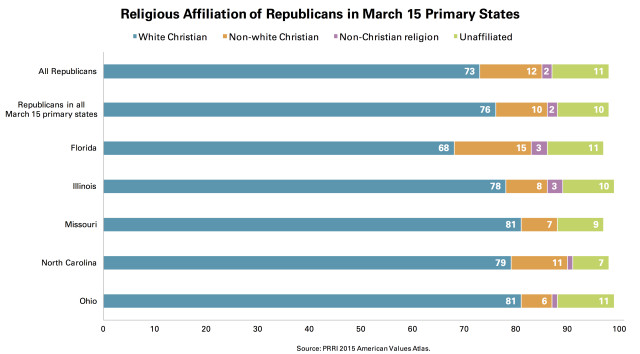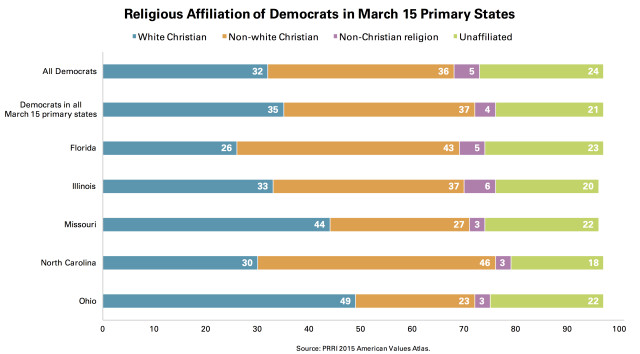March 15 is being dubbed as Super Tuesday, Take Two, with five states—Florida, Illinois, Missouri, North Carolina, and Ohio—holding primaries for both Republican and Democratic residents. Here’s a look at both parties’ religious affiliation in each state.
Although the geography of March 15 primary states shifts somewhat more northward, the religious makeup of Republicans in these states closely resembles that of Republicans in Super Tuesday states. Roughly three-quarters of Republicans in March 15 states (76 percent), Super Tuesday states (74 percent), and Republicans overall (73 percent) identify as white Christian. Roughly equal percentages in each state identify as non-white Christian and religiously unaffiliated, while very few identify with a religion other than Christianity.
Republicans in Florida and Ohio, which have been pegged as critical states for GOP contenders to win, have somewhat different religious profiles. However, each has a sizable contingent of white evangelical Protestants. Roughly one-third (32 percent) of Florida Republicans and 38 percent of Ohio Republicans identify as white evangelical Protestants.
White evangelical Protestants will likely exert greater influence in North Carolina and Missouri where they account for 53 percent and 43 percent of Republicans in those states. Even in Illinois, which has a relatively modest-sized evangelical population, nearly one in three (31 percent) Republicans identify as white evangelical Protestant.
Fully one-third (33 percent) of North Carolina Democrats identify as black Protestant, a higher percentage than any other March 15 state, although they make up a sizable number of Democrats in Florida (22 percent), Illinois (21 percent), Missouri (19 percent), and Ohio (16 percent). Florida’s substantial Hispanic population helps explain its large (43 percent) Democratic non-white Christian population. Twenty-one percent of Florida Democrats are Hispanic Americans.
To explore the unique religious landscape of your state, check out the American Values Atlas.


